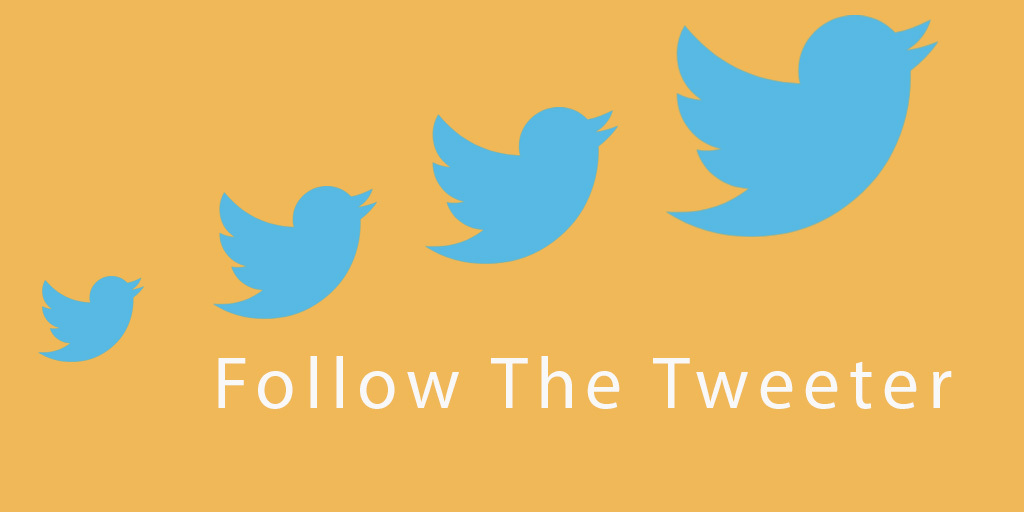Congratulations! You have decided to create a Twitter account. You say to yourself “What’s next?”. You know that talking to an empty room will get you no where. You need to grow your followers.
You maybe thinking you need more manpower or additional costly resources. Twitter is one of the many social media channels which will allow your business to market and advertise without that overhead. The character count for a tweet on Twitter forces you to think about your. This concept enables you as a business owner to get a message out quickly and easily.
Twitter was the first social media channel to create #hashtags. They simply work as tags to group tweets together containing the same thought. With your Twitter account, you can retweet, share and follow countless sites which could help you to gain new followers too.
But I have Few Followers
As a brand new business on Twitter, gaining popularity requires a sound footing. You have researched social media marketing strategies. You may have even started following other business and possibly a few field influencers. You have retweeted over and over again and maybe even posted some of your own original content with numerous hashtags too.
But then when you take a look at your Twitter profile again, the number of your followers are way lower than those of the people you’ve been following. You may begin to second guess your approach and start to question why scandalous celebrities have greater number of followers and you’ve decided to create your own Kim K scandal of your own…okay maybe that is a bit tongue in cheek, but are you sure you are doing the right thing to be noticed? What could the issue be? Here are 11 mistakes that you shouldn’t be making on Twitter if you want to succeed and increase your followers.
1. Tick-Tock Stay Away From the Midnight Clock
When creating a tweet, the primary goal is to have your followers retweet your post, but that relies greatly on the time in which it was posted. Posting in the middle of the night is not the action of a success business person, no should it be yours. If the people who are responsible for liking and retweeting are already asleep, you tweet will fall to sound of the clock going tick-tock.
2. Hashtags You Say?
Look at your last tweet. Did you include hashtags in it? Maybe you put far too many in it, either way this isn’t going to get you anywhere fast. Referring back to the beginning of this blog post, I mentioned that hashtags work as tags to group tweets together containing the same thought. You should always include at least 1 hashtag in your post, but don’t clutter it either…we like to stick to 2. Your tweet is limited in character count and should be created with a single thought in mind. Hashtags create a higher visibility rate on Twitter. Offerpop reports that among all of the hashtags users, more than 70% of the people who use hashtags posting through their mobile phones compared to only 30% of those using hashtags on their computers. Remember, hashtags will help to increase your popularity in Twitter, but take it easy, no one likes a hashtag stuffing fool.
3. Following Everyone in Sight
Resist the temptation to take your mouse on a trip down Followers Lane. Following everyone may sound like a great idea, but it will not guarantee you a great number of followers. Just as in your everyday business, you should have a target audience for which you use to leverage your popularity on Twitter. One often overlooked feature in Twitter is located in the sidebar. Twitter displays recommendations on who to follow based on your industry. When decided on who to follow, do so with a strategy in mind. You want to identify those who would follow you back based on the balance between their followers and following numbers. Image if you tried to follow someone such as Ellen DeGeneres, with 76.6 MM followers, its doubtful that she is going to follow you back.
4. No Interaction with Followers
Engagement! Engagement! Engagement! Engagement! Wow, I feel like Microsoft’s Steve Ballmer’s rant. But in all seriousness, engagement is the one thing that most followers and loyal brand fans prioritize above all else. The act of getting people to follow you is not all about your posts but mainly on how you engage with them via replies and direct messages.
We use a tool designed for Twitter users, Followerwonk, which allows you to preform a search for key terms pertinent to your industry’s nature, and view the topics which have the highest response rates. This allows you to expand your social graph and through this, you could engage with them using the same key terms. One of our favorites queries is to compare the followers of any 2-3 users to find overlaps and new audiences. This powerful tool will surely help to find new avenues for followers.
5. Don’t be an Egg in A Sea of Tweets
In order to be taken seriously and appear as an active Twitter user, you should take a moment to spruce up your profile. Be sure to upload a picture or your company logo. No one would follow someone who doesn’t even bother to edit their profile. Don’t be shy here. Include your website URL and tell everyone a bit about yourself or your company.
6. Lengthy Tweets
Twitter has a limited number of characters per post and it just got a boost. Remember, Twitter is for people on-the-go. If your tweets are too long, some users will skip through it. Go for short and punchy tweets. “According to Social Media Examiner, shorter tweets get 17% higher engagement from other users. Short tweets allow room for conversations, and a greater audience for retweeting and commenting.”
7. You Don’t Ask for Retweets
It may not seem obvious at first, but for business brands, there is no reason to be shy or hesitant about giving it a try. Trying to ask for retweets may feel as though you are groveling, but it is a huge opportunity that most brands simply fail to realize. Reports say that asking for retweets results in 12 or more times RTs. Moreover, spelling out the entire word, ‘retweet’ than the abbreviation RT is 23 times higher than the latter. Then again, make sure that your requests are once in a while; too much might be annoying.
8. Posting too much
Just as quick as someone clicked the button to follow you, they can click that same button to unfollow you and you end up back to square zero. A Forbes article states that the more you tweet, the more likely you could have followers. However, this is not entirely correct. Though posting promotes visibility for your company, too much of it is appalling. So how much should you post on Twitter? It really is different for each and every industry and business. This is found through researching your competitors, reviewing how many times they tweet and engage each day, while striking a balance with what feels right for you. We’ve found that tweeting 5-6 times per day works best for us.
9. Your Posts are not Worth Retweeting
Crafting an excellent tweet involves both quality and quantity. When social media expert, Avinash Kaushik was asked, he revealed that content is important to gain the applause of your audience. The key is to make your tweets short and catchy. Going back to what we said before, your strategy must involve tweets which are relatable to your target audience. Producing content for the sake of producing content will surly fill your Twitter feed, but producing quality content will go far and above to help you gain the attention of users and may well gain the retweets your page needs.
10. Including Bad Links to Your Posts
This may seem like a no-brainer, but each week I encounter a handful of tweets which you click on the link in the tweet and it does not work. Always double check the links you include in your posts. We love to use link shortening services like Bit.ly to track our link clicks. It’s important to fully verify your link works before you create your Bit.ly link or you will have skewed data.
Your aim should be to create posts which are both quality and credible, and have a target audience. You wouldn’t want to lose those followers who spent so much time acquiring by having something as simple as a bad link.
11. Don’t be BORING! Post a Picture
The old adage, a picture is worth a thousand words, rings true in social media too. Every marketing strategy, pictures are like a moth to porch light. Tweets which contain images or even better, videos, have a greater chance of getting retweeted and engagement as well.
Social media marketing strategies may differ from business to business, but these tips ring through regardless of the industry. In addition to the tips in this blog post, consider looking at conversation, amplification, applause, and economic value, the four tips of Avinash Kaushik’s social media metrics to help you in your campaign.
Have you decided what to do with your Twitter followers problem? Scandals are for the desperate! Maybe it’s time for you to retweet more, change that profile picture, and tweet more! Take charge now and if you’ve resolved these issues, your Twitter account might fly as high and as viral as Flappy Bird!
 Last year Square came onto the WooCommerce add-on marketplace as a paid add-on. Many merchants were looking for a way to integrate a POS into their e-commerce business to accept off-line sales. At Bluehive Interactive, we work with several merchants who are artisans, often selling their merchandise at craft markets and farmer markets in the spring/summer seasons. We used to recommend options which were not deeply integrated into WooCommerce and required an on-going monthly subscription.
Last year Square came onto the WooCommerce add-on marketplace as a paid add-on. Many merchants were looking for a way to integrate a POS into their e-commerce business to accept off-line sales. At Bluehive Interactive, we work with several merchants who are artisans, often selling their merchandise at craft markets and farmer markets in the spring/summer seasons. We used to recommend options which were not deeply integrated into WooCommerce and required an on-going monthly subscription.




 Not surprisingly the number of suggestions for a replacement color have been endless. Along with parodies of existing colors, some of the suggestions have ranged from Moral Ambiguity Gray to Singing Like a Canary Yellow and even Fake News White
Not surprisingly the number of suggestions for a replacement color have been endless. Along with parodies of existing colors, some of the suggestions have ranged from Moral Ambiguity Gray to Singing Like a Canary Yellow and even Fake News White